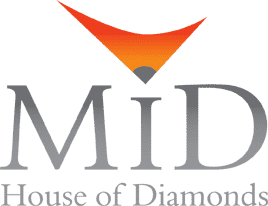All MID employees must be alert to activity indicative of money laundering, terrorist financing or other criminal activity. It is MID’s policy to comply with legal requirements in each geography it operates to promptly report suspicious transactions to the relevant Financial Intelligence Unit and/or activity as required and to cooperate with law enforcement in criminal investigations within the confines of applicable laws and regulations. The suspicious transactions and/or activity monitoring triggers are identified in the Suspicious Transaction/Activity Procedures; they are defined, reviewed and approved by the Compliance Committee periodically or upon update.
If an officer or employee of MID discovers activity that he or she knows or suspects involves money laundering, terrorist financing or other criminal activity, the information must immediately be referred to the Compliance Officer.
MID will file a Suspicious Transaction Report if a transaction is conducted or attempted by, at, or through MID, that MID knows, suspects or has reason to suspect the transaction or pattern of transactions:
· Involves funds derived from illegal activity, or is intended to hide or disguise funds or assets derived from illegal activity, as part of a plan to violate or evade any law or regulation, or to avoid any transaction reporting requirement under law or regulation;
· Serves no business purpose or apparent lawful purpose, and MID knows of no reasonable explanation for the transaction after examining the available facts, including the background and possible purpose of the transaction; or
· Involves the use of MID to facilitate criminal activity.
Information regarding a Suspicious Transaction Report filing is confidential and shared internally only on a need-to-know basis in order to minimize the risks of inadvertent disclosure. MID does not share its suspicions with customers or employees who are subjects of an investigation, nor are they told if a Suspicious Transaction/ Activity Report has been filed. It is illegal to tell any person involved in a suspicious transaction that a Suspicious Transaction/ Activity Report has been filed. In addition, the company will enable increased monitoring of customers classified as high-risk customers by lowering the thresholds for monitoring regarding the activity.
All controls will also refer to the attempt to perform an action, even though the action was not completed.
MID employees are alert and monitor for the following red flags:
Suspicious Documents
1. Documents provided for identification appear to have been altered or forged.
2. Information on the identification is not consistent with information provided by the person opening a new account or customer presenting the identification.
3. Other information on the identification is not consistent with readily accessible information that is on file with MID.
Suspicious Personal Identifying Information
1. Personal identifying information provided is inconsistent when compared against external information sources used for identity verification.
2. Personal identifying information provided by the customer is not consistent with other personal identifying information provided by the customer.
3. Personal identifying information provided is associated with known fraudulent activity as indicated by internal or third-party sources.
4. Personal identifying information provided is of a type commonly associated with fraudulent activity as indicated by internal or third-party sources.
5. The identification number provided is the same as that submitted by other persons opening an account or other customers.
6. The address or telephone number provided is the same as or similar to the information submitted by an unusually large number of other persons opening accounts.
7. The person opening the account fails to provide all required personal identifying information on an application or in response to notification that the application is incomplete.
8. Personal identifying information provided is not consistent with personal identifying information that is on file at MID.
A suspicious activity is an activity which, in light of the information in its possession, the suspicion arose that it is related to activity which is forbidden in accordance with the Money Laundering Prohibition Law or the Terror Financing Prohibition Law. The reports will be based on the findings received in the framework of the monitoring activity performed by the Company, as well as reports received by employees who are in contact with customers or customer activity, and who have identified an unusual activity by the customer.
The Company shall examine the background and purpose of the suspicious activity conducted by the customer, and will examine whether the activity amounts to an activity requiring reporting.
The entire process will be anchored in a procedure which will include full documentation of the decision-making process, from the initial discovery and until forming the decision whether to report to the competent authority, and actions which must be taken in case the report is decided to be archived.
For this matter, it is important to note that a currency transaction report does not exempt from the duty to make a suspicious activity report. In addition, a report will also be delivered regarding an attempt to perform an action, even if the action was eventually not completed. In case suspicious activity persists, a continuation report will be sent accordingly.
A report of a suspicious activity will be filed in the shortest period under the circumstances. In case of special circumstances, an inevitable delay or in case the Company sees the delay as justified, the reasons for the delay will be documented
 Play Video about JOIN US AT THE DIAMOND SHOW - HONG KONG 16-20 SEPTEMBER 2024
Play Video about JOIN US AT THE DIAMOND SHOW - HONG KONG 16-20 SEPTEMBER 2024 Play Video about Gemgeneve2022- NOVEMBER
Play Video about Gemgeneve2022- NOVEMBER Play Video
Play Video






